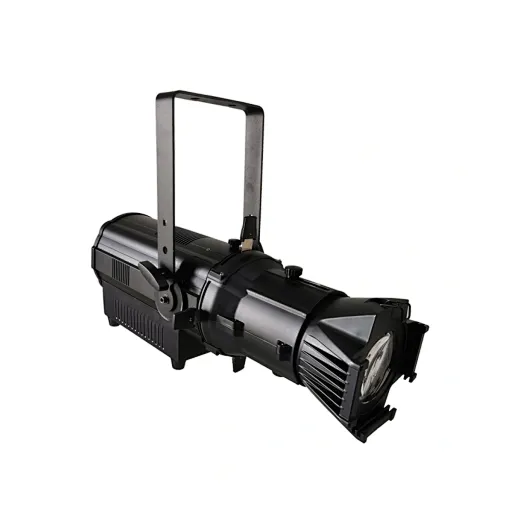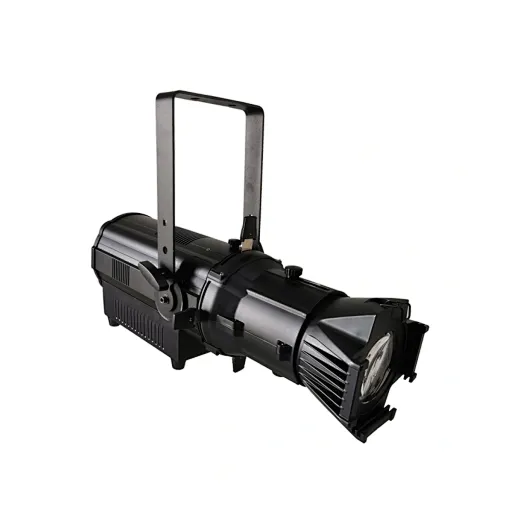Introduction: Why Lenses Matter in LED Stage Lighting
In the world of modern stage lighting, the lens is not just a piece of glass—it's a crucial optical tool that defines how light behaves on stage. Whether you're lighting a solo performer, illuminating an entire scene, or creating texture and atmosphere, choosing the right lens type is essential. This guide explores the three main LED lens types—Fresnel, Profile, and Wash—explaining their mechanics, visual effects, and best-use scenarios.
1. Fresnel Lenses: Soft, Adjustable, and Versatile
What Is a Fresnel Lens?
Named after French physicist Augustin-Jean Fresnel, this lens type features concentric rings that allow a relatively short optical distance. Fresnel LED lights produce a soft-edged beam that’s ideal for natural-looking stage illumination.
Key Features:
Manual or motorized zoom control (spot to flood)
Soft beam edges ideal for blending with other lights
Energy-efficient and low heat output in modern LED variants
Best Applications:
Key lighting in theater and film
General area wash for subtle transitions
Backlighting for depth without harsh shadows
Modern Fresnel fixtures also integrate barn doors for beam shaping and are frequently used in black box theaters and studios.
2. Profile Lenses: Sharp Focus and Precision Control
What Is a Profile Lens?
Profile spotlights, also called ellipsoidals, are defined by their sharply focused beams and the ability to cut and shape light using shutters or gobos. These fixtures are perfect for isolating subjects, projecting patterns, and creating crisp lighting looks.
Key Features:
Shutter system for precise edge control
Gobo slots for custom logo or texture projection
High CRI values ensure color fidelity on skin tones and fabrics
Best Applications:
Front lighting for speeches, solos, or ceremonies
Logo projection in weddings or corporate events
Dramatic lighting cues with hard edges
A top example is the S-16 200W LED Profile Spotlight, combining accuracy with low noise operation, perfect for formal venues.

3. Wash Lenses: Wide Coverage and Ambient Color
What Is a Wash Lens?
Wash optics are designed to flood large areas with evenly distributed light. They are usually paired with RGBW or 6-in-1 LEDs, making them ideal for color washes, ambient lighting, and scenic effects.
Key Features:
Wide beam angles (often 25°–60°+)
Smooth blending of multiple fixtures
Designed for low shadow and high color uniformity
Best Applications:
Illuminating stage backgrounds or curtains
Side or top washes for performers
Color ambiance for weddings, festivals, and galas
An excellent example is the 18x18W RGBWA+UV LED Par Light, which offers flexible wash coverage with rich color mixing.

4. Comparing the Three Lens Types
| Lens Type | Beam Edge | Control Mechanism | Best Use Case |
|---|---|---|---|
| Fresnel | Soft | Zoom + Barn Doors | Key lighting, subtle transitions |
| Profile | Hard, defined | Shutters + Gobos | Precision spots, patterns, logos |
| Wash | Soft, wide spread | DMX dimming + lens angle | Backgrounds, color fills, full stage washes |
Each lens type brings a unique character to lighting design. The key is understanding how to blend them, so each fixture contributes to the emotional and spatial dynamics of the performance.
5. Choosing the Right Lens for the Right Moment
Lighting professionals often combine all three lens types for layered effects. A Fresnel may serve as a front light, a Profile light as a gobo projection on scenery, and a Wash fixture to add atmosphere. The choice depends on:
Stage size
Desired mood
Control requirements
Visual storytelling needs
Selecting the appropriate lens improves focus, balance, and audience immersion—core goals in any performance design.
READ MORE:
Products
Contact us





Blue Sea Lighting is an enterprise with rich experience in the integration of industry and trade in stage lighting and stage special effects related equipment. Its products include moving head lights, par lights, wall washer lights, logo gobo projector lights, power distributor, stage effects such as electronic fireworks machines, snow machines, smoke bubble machines, and related accessories such as light clamps.
Quick Links
For more questions subscribe to our email









